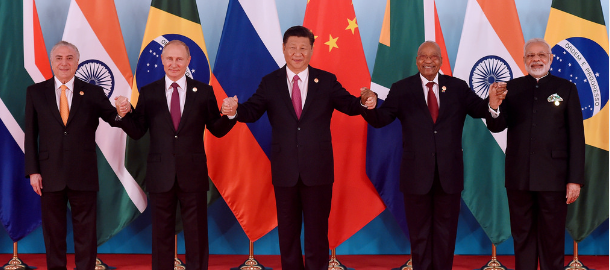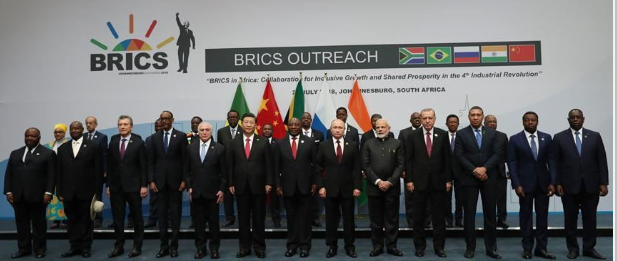BRICS Countries -5 Powerful Strategies Fueling Job Creation

Table of Contents: BRICS Countries
- Introduction
- Promoting Entrepreneurship
- Attracting Foreign Investments
- Investing in Infrastructure Projects
- Supporting Industries with High Job Creation Potential
- Conclusion
- The BRICS countries, comprising Brazil, Russia, India, China, and South Africa, have been making significant strides in job creation. Through a combination of innovative strategies, these nations are fostering economic growth and employment opportunities. This article explores five powerful strategies that are driving job creation in the BRICS countries.
- Promoting Entrepreneurship:
One of the key strategies employed by the BRICS countries is the promotion of entrepreneurship. By providing support and resources to budding entrepreneurs, these nations are encouraging the establishment of new businesses. This not only creates job opportunities but also fosters innovation and economic development. - Attracting Foreign Investments:
Another crucial strategy is attracting foreign investments. The BRICS nations have been actively seeking foreign direct investment (FDI) by implementing favorable policies and offering incentives to international investors. This influx of capital helps stimulate economic growth and job creation within these countries. - Investing in Infrastructure Projects:
Investing in infrastructure projects is a significant driver of job creation in the BRICS countries. By developing and upgrading transportation networks, energy systems, and communication infrastructure, these nations are not only improving connectivity but also generating employment opportunities in construction, engineering, and related sectors. - Supporting Industries with High Job Creation Potential:
The BRICS countries are strategically supporting industries with high job creation potential. They are focusing on sectors such as manufacturing, technology, renewable energy, and services. By providing incentives, training programs, and favorable policies, these nations are attracting investments and creating employment opportunities in these thriving industries.
The BRICS countries have implemented a range of powerful strategies to fuel job creation within their economies. By promoting entrepreneurship, attracting foreign investments, investing in infrastructure projects, and supporting industries with high job creation potential, these nations are driving economic growth and providing employment opportunities for their populations. As these strategies continue to be implemented and expanded, the BRICS countries are poised to further strengthen their positions as global economic powerhouses.
- Enhancing Education and Skills Development:
Another crucial strategy for job creation in the BRICS countries is the emphasis on education and skills development. These nations recognize the importance of a skilled workforce in driving economic growth. By investing in education, vocational training programs, and skill enhancement initiatives, they are equipping their citizens with the necessary skills to meet the demands of the job market. - 5.1 Improving Access to Education
- 5.2 Enhancing Vocational Training Programs
- 5.3 Fostering Collaboration between Academia and Industry
5.1 Improving Access to Education:
The BRICS countries are working towards improving access to quality education for all. They are investing in expanding educational institutions, providing scholarships and grants, and implementing policies to ensure equal opportunities for education. By doing so, they are equipping their population with the knowledge and skills needed to secure employment.
5.2 Enhancing Vocational Training Programs:
Recognizing the importance of vocational skills, the BRICS countries are enhancing vocational training programs. These programs focus on providing practical skills and technical knowledge in various fields such as manufacturing, construction, healthcare, and information technology. By aligning training programs with industry requirements, they are preparing individuals for specific job roles, thereby increasing their employability.
5.3 Fostering Collaboration between Academia and Industry:
To bridge the gap between education and industry needs, the BRICS countries are fostering collaboration between academia and industry. They are encouraging partnerships, internships, and research collaborations between educational institutions and businesses. This collaboration ensures that the curriculum is aligned with industry demands, and graduates are equipped with the skills and knowledge sought by employers.
Conclusion:
The BRICS countries are taking proactive measures to enhance education and skills development, recognizing their crucial role in job creation. By improving access to education, enhancing vocational training programs, and fostering collaboration between academia and industry, these nations are empowering their workforce with the necessary skills to thrive in the job market. Through these strategies, the BRICS countries are paving the way for sustainable economic growth and increased employment opportunities.
MORE NEWS ABOUT BRICS
BRICS nations unite to boost global technological innovation

The world’s greatest arising economies are making further ties in tech areas, for example, from space projects to web based shopping.
Long periods of close innovation participation among China and individual emerging nations exhibited the significance of global coordinated effort in this day and age of unilateralism and protectionism.
Gatherings joined by some senior government authorities from the center BRICS countries of Brazil, India, China, Russia and South Africa mirror a developing interest for cross-line innovation improvements. Recently, China’s Science and Innovation Priest Wang Zhigang told his partners from BRICS nations that China hopes to extend cooperation in innovation advancement and advance trades. Wang’s vow was reverberated by a joint proclamation that underlined multilateralism and the possibility of tech organization among BRICS nations.
The forthcoming BRICS Highest point, scheduled to begin on August 22, will be the principal BRICS Culmination to be facilitated face to face since the episode of Coronavirus. Pioneers from the five nations are supposed to trade sees on global difficulties and upgrade coordination and participation in foreign relations, as they look to infuse steadiness and positive energy to a world laden with changes and mayhem, Unfamiliar Service representative Wang Wenbin expressed in front of the occasion.
As the world’s second-biggest economy and an examination force to be reckoned with of new innovations from remote correspondences to quantum processing, China has effectively imparted its expertise to nations out of luck.
China’s Public Space Organization (NSA) is working with BRICS nations on a remote detecting satellites program as a feature of an information sharing arrangement endorsed in 2021 that helps member nations to more readily screen ecological changes and catastrophic events utilizing satellites information. The NSA told its partners in a five-country meeting in November that China, which just completed development of its monitored space lab, will share its accomplishments in space innovations and the satellite organization will be an illustration of the objective.
China has consented to innovation collaboration arrangements with 161 nations, locales and global associations. It’s likewise an individual from in excess of 200 worldwide or multilateral systems. China joined the global work to foster the atomic trial reactor and one of the world’s most progressive telescopes. China is additionally working with BRICS nations and past on environmental change, food handling and wellbeing explores.
China has been the biggest exchanging accomplice of South Africa for 13 back to back years, and respective exchange developed by five percent year-on-year to $56.74 billion of every 2022, as indicated by the Unfamiliar Service.
The BRICS nations contributed a 6th of overall Research and development costs and a fourth of all science and innovation research papers, as per the most recent yearly report on BRICS’ public advancement intensity improvement. The five nations was likewise liable for trading more than $6 trillion of trend setting innovation items, representing a fourth of the world’s aggregate.
BRICS nations share expansive cooperation likely in a large number of regions including bio-tech, environmental change, new energy improvement, space innovations, specialists told a course facilitated by a Service of Science and Innovation partnered substance recently.
Aside from between government joint efforts, Chinese organizations likewise assume a basic part in BRICS nations. China has been a fundamental exchange accomplice for the majority creating economies including Russia and South Africa. Chinese cell phone brands including Xiaomi and Motorola are among the hits in India and Brazil.
Advancements that are now generally utilized in China, like versatile installment, cell phones and web based shopping, are additionally rapidly extending in Africa as well. Chinese organizations are helping African countries that were not most popular for hearty innovation development to fabricate online business organizations, food conveyance and different administrations.
MUST READ
- Clinical Nurse Practitioner Job Opportunities at Western Cape Department of Health and Wellness
- ABSA Junior Learnership Opportunity: Kickstart Your Career Journey
- Apply for Secretary for Police Service (Director General) Role – Civilian Secretariat for Police Service
- Latest Vacancies: x5380 Service Delivery Brigades Positions at Gauteng Department of Social Development
- Law Researcher Position at the Office of the Chief Justice – Apply by 01 September 2023




